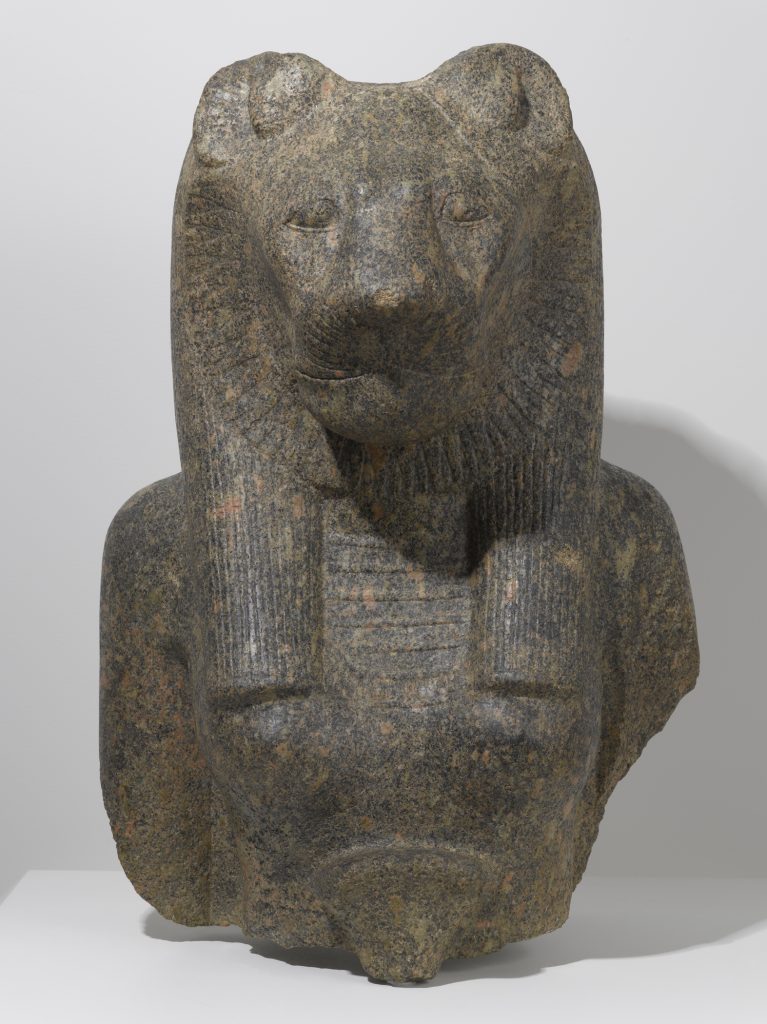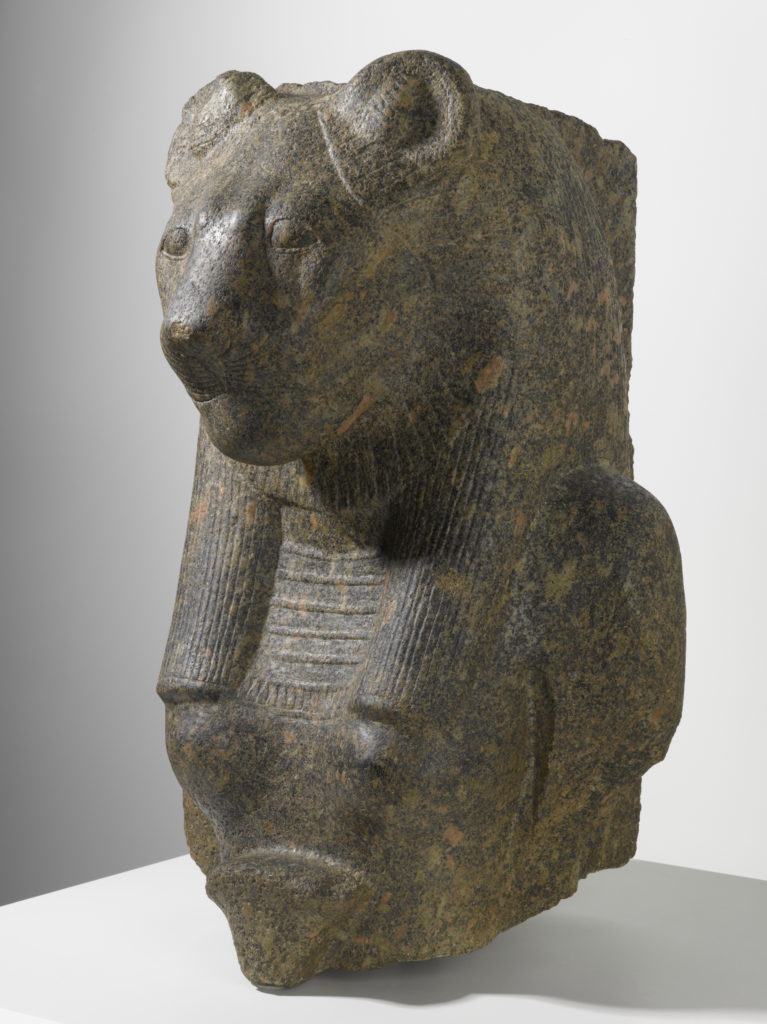Bust of the Goddess Sekhmet (work of art)
Artwork Info
Key Ideas
- This sculpture is carved out of granite. It depicts the goddess Sekhmet as a lioness-headed woman and features carved lines to show the ruff (similar to a male lion’s mane) and muzzle.
- Sekhmet is one of the oldest known Egyptian deities. A deity, or god or goddess, is a supernatural being that is considered divine or sacred. Sekhmet’s name means “the mighty one.” She was a warrior goddess of both destruction and healing.
- This bust is one of more than 600 granite statues of the goddess Sekhmet found in the mortuary temple of King Amenhotep III and at the Temple of Mut at Karnak, where many remain on-site.
- Sekhmet’s ferocious and vengeful nature has associated her with the lioness. Like the lioness, Sekhmet is also nurturing and protective of her loved ones. Her dual nature was appealing to the ancient Egyptians.
Learn More
Sekhmet, whose name means “the mighty one,” was a goddess of war. She always sided with the king during battle. The meaning of her name may come from the story of her terrible fury when her father, the sun god Re, sent her to Earth to destroy humankind for plotting against him. After a great massacre, Re relented but was unable to restrain his daughter’s rage. He finally stopped the killing by flooding a field with beer, dyed red so that Sekhmet thought it was blood; she drank it until she calmed down. Although Sekhmet brought death and disease, the Egyptians also credited her with the ability to cure illnesses, and she became the patron goddess of doctors. Her priests were the earliest known veterinarians.
This bust was originally part of a larger statue that stood more than two meters (6.56 feet) tall and wore a moon disc, a full moon-shaped headdress, on top of the head. The flower design beneath Sekhmet’s breasts was the top of a scepter, an ornamental staff or wand carried by a ruler. This detail indicates that the statue stood erect, holding the scepter with her left hand. Her right hand would have held an ankh, the symbol of life, along the side of her body. The variations in the color of the granite draw attention to the carved details of her muzzle and the ruff (the smaller “mane” of a lioness) framing her face.
tags: ancient Egypt, mythology, animals, conflict, force, identity, impact, power, women
Additional Resources
Resources for Teachers
- Read an article about Sekhmet.
- Learn more about the statues of Sekhmet.
- Learn more about Egyptian gods and goddesses.
Resources for Students
- Take a look at another bust of Sekhmet.
- Watch a video about Egyptian sculpture.


